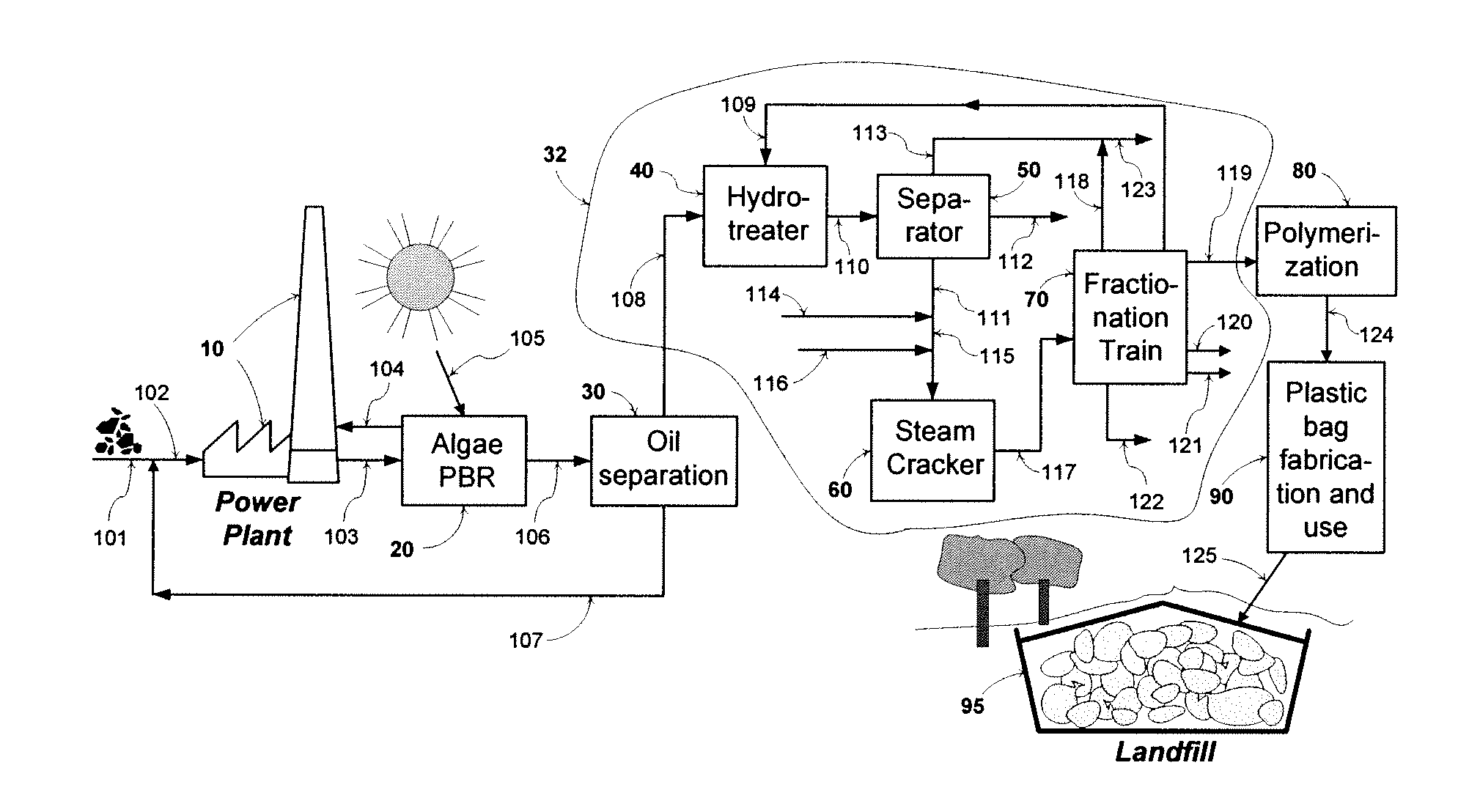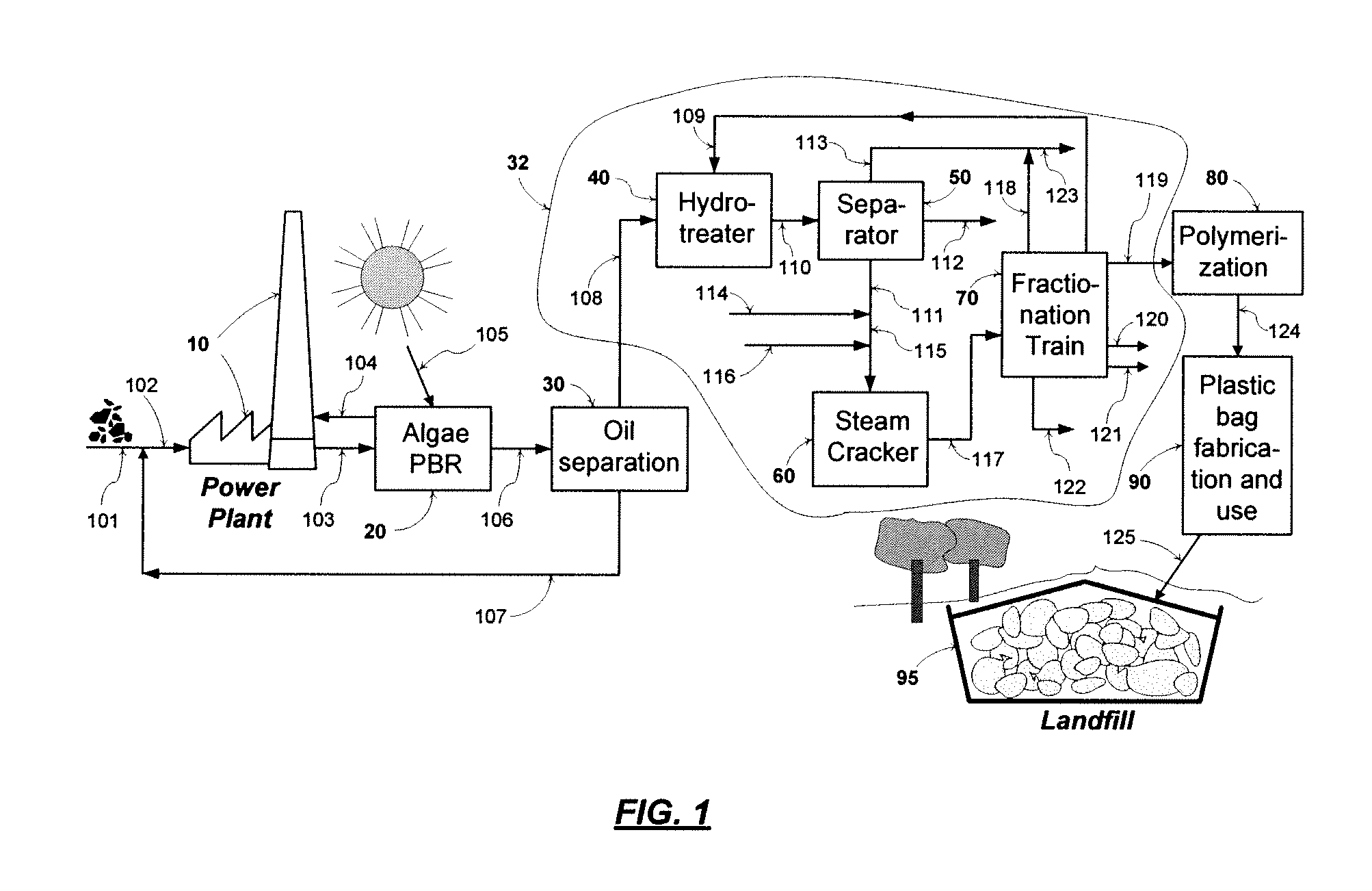Profitable method for carbon capture and storage
a carbon dioxide and carbon dioxide technology, applied in the direction of hydrocarbons, hydrocarbon cracking, climate sustainability, etc., can solve the problems of threatening arctic ecosystems, endangering coastal communities, and limited use of ccs applications
- Summary
- Abstract
- Description
- Claims
- Application Information
AI Technical Summary
Benefits of technology
Problems solved by technology
Method used
Image
Examples
example 1
Steam Cracking of Biomass-Based Hydrocarbons
[0073]A biomass-based oil composition made of a blend of animal fats and spent vegetable oils was prepared. All biofeed components were obtained from Tyson Foods (Springdale, Ark.). The makeup of this blend is provided in Table 1.
TABLE 1Make-up of Bio Oil BlendComponentAmount (wt %)Poultry Fat46Yellow Grease18Brown Grease18Floatation Grease9Grease from Prepared9Foods
[0074]The feed blend of Table 1 was subjected to acid wash pretreatment whereby phosphorus and metal contaminants were partially removed. The properties of the pretreated bio oil, including residual contaminants and fatty acid profile, are given in Table 2.
TABLE 2Summary of analytical data on pretreated bio oil feed blendContaminants / Quality AnalysisAsh (ppm wt)67.2Nitrogen (ppm wt)1006Sulfur (ppm wt)111Acid Value (mg KOH / g)129Karl Fisher Moisture (wt %)0.85Moisture and all Volatiles (wt %)1.30Insoluble impurities (wt %)0.04Unsaponifiables (wt %)1.03Peroxide value (meq / kg)Therm...
PUM
| Property | Measurement | Unit |
|---|---|---|
| operating pressures | aaaaa | aaaaa |
| temperature | aaaaa | aaaaa |
| temperatures | aaaaa | aaaaa |
Abstract
Description
Claims
Application Information
 Login to View More
Login to View More - R&D
- Intellectual Property
- Life Sciences
- Materials
- Tech Scout
- Unparalleled Data Quality
- Higher Quality Content
- 60% Fewer Hallucinations
Browse by: Latest US Patents, China's latest patents, Technical Efficacy Thesaurus, Application Domain, Technology Topic, Popular Technical Reports.
© 2025 PatSnap. All rights reserved.Legal|Privacy policy|Modern Slavery Act Transparency Statement|Sitemap|About US| Contact US: help@patsnap.com


